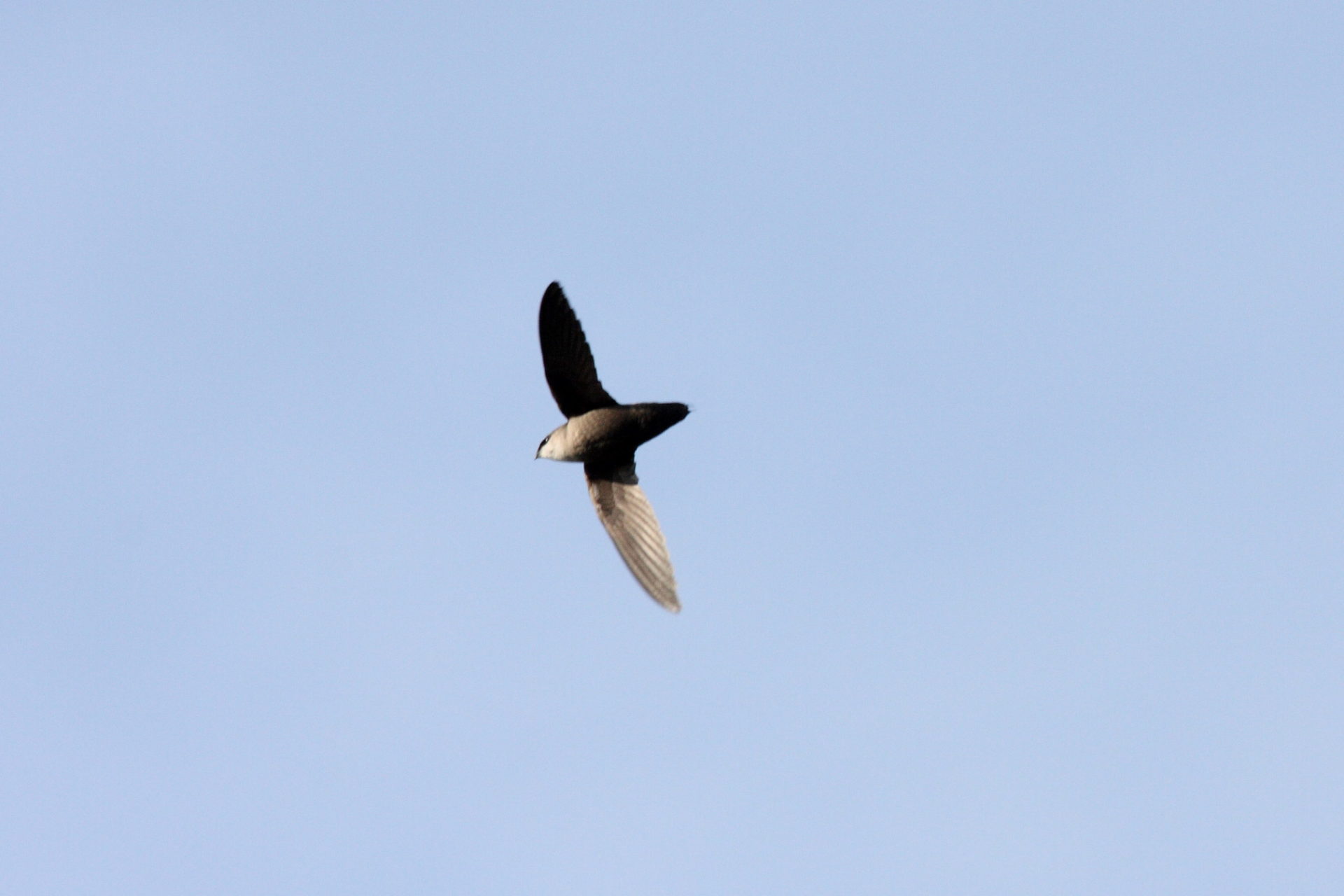Birds
Chimney Swift
Chaetura pelagica

Voice: In flight the swift calls with a twittering of rapid repeating chirps.
Roger Tory Peterson coined the term “a cigar with wings” to describe the unique shape of the chimney swift’s body. Their long sooty gray overall body, slightly curved wings, repeated wing beats, and distinctive chattering voice are easily recognizable. They can be seen flying high primarily during twilight as well as during the day. They are the most widely distributed swifts in the United States, and are the only swift commonly found in the eastern U.S.
Chimney swifts are rarely ever seen, if at all, perching on a branch, walking on the ground or clinging to a trunk. Instead they are seen continuously flying catching insects in mid air. They can eat up to a third of their weight in flying insects, and are ravenous eaters of mosquitoes, flies, ants and termites.
Besides catching food, in flight chimney swifts also break twigs off trees for nest building. As their name implies, they are known for building their nests in chimneys. Both the male and female build a nest mostly of twigs glued to each other and to a vertical wall with swift saliva. Twigs are first glued by saliva against the inner wall of a tree, cave or chimney; other twigs are then attached to the first twigs to create a half cup nest. There is usually only one active nest in any one chimney or tree. Thus the funnel of hundreds to thousands of birds usually seen entering a chimney in a large buildings such as schools or factories are roosting, not nesting birds. Roosting happens after nesting is complete and migration has begun.
In mid-May females usually lay one set of 4-5 white eggs in the twig nest. Young are tended by both adults and sometime one or two additional non breeding swifts. Adults feed the young by spew out insects from their throat pouch directly into the chicks’ mouths. When the young are around two weeks old they usually leave the nest only to cling to the walls below it. Their unique feet have four grabbing, hook-shaped clawed toes and their rigid spiny tipped tail feather help them hold onto vertical surfaces. They leave the nesting area 26 days after hatching.
What you can do to help! Chimney swifts have benefited greatly by the construction of chimneys in homes and buildings. Unfortunately due to recent changes in chimney construction including covering openings and narrowing flues available nest sites have decreased and may be a factor in declining numbers. To help the population of chimney swifts masonry or clay flue-tile chimney can be open at the top and closed at the damper from March through October to provide nest sites. In addition many landowners and local organizations build chimney swift tower made specifically for nesting swifts. Consider supporting their efforts or constructing a tower in your community. For more information about chimney swift towers go to the North American Chimney Swift Nest Site Research Project http://www.chimneyswifts.org/ or check out The Holden Arboretums chimney swift tower.
Photo Credit: Dominic Sherony, Flickr.com
Best Location to View: Corning Lake, Corning Visitor Center, Working Woods
Color: Dark brown overall; long, thin, pointed wings, square tail and tube shape body; Rapid wing beats in flight.
Range: Eastern North America west to Rocky Mountains; occasional breeder in California and southwest in recent years. Spends winters in the tropics
Size: 5"
Wingspan: 12"



